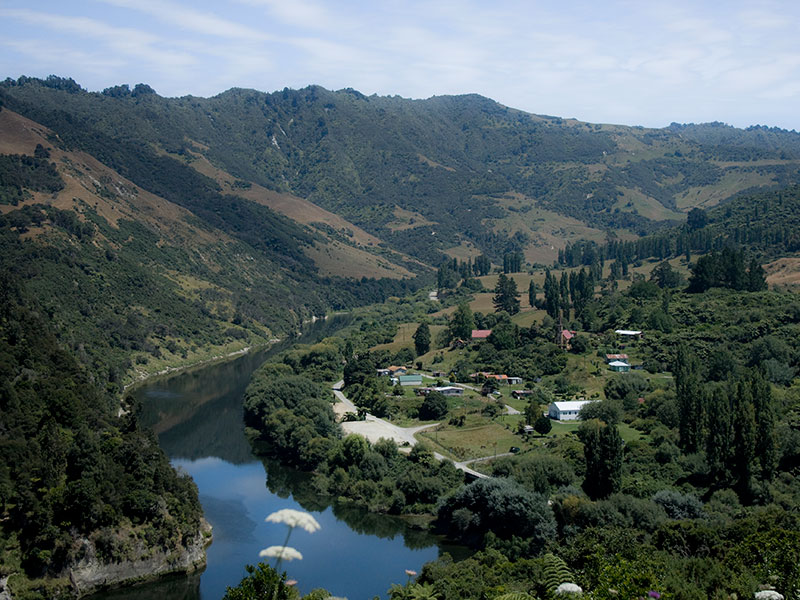JERUSALEM-HIRUHĀRAMA

Jerusalem, named for the Biblical Jerusalem (in Māori, Hiruhārama), is a settlement 66 kilometres (41 mi) up the Whanganui River from Whanganui, New Zealand. Originally called Patiarero, it was one of the largest settlements on the Whanganui River in the 1840s, with several hundred Ngāti Hau inhabitants of the iwi Te Āti Haunui-a-Pāpārangi. Unlike other Whanganui River settlements given transliterated place names by Reverend Richard Taylor in the 1850s, Jerusalem is usually referred to using the English version of its name. It grew into several small settlements, including Roma (Rome) and Peterehama (Bethlehem), founded by the remains of Taylor’s congregation after the majority converted to Catholicism when a Roman Catholic mission was built in 1854.
Jerusalem was the isolated site where, in 1892, Suzanne Aubert (better known as Mother Mary Joseph) established the congregation of the Sisters of Compassion. They became a highly respected charitable nursing/religious order. A convent remains on the mission property, as well as the church which replaced the original building destroyed by fire in 1888, and Sisters of Compassion still care for them.
New Zealand poet James K. Baxter and many of his followers formed a community at Jerusalem in 1970, which disbanded in 1972 after Baxter’s death. Baxter is buried there.
Source: https://en.wikipedia.org/wiki/Jerusalem,_New_Zealand
COMMUNITY DOCUMENTS

Jerusalem Community Plan

